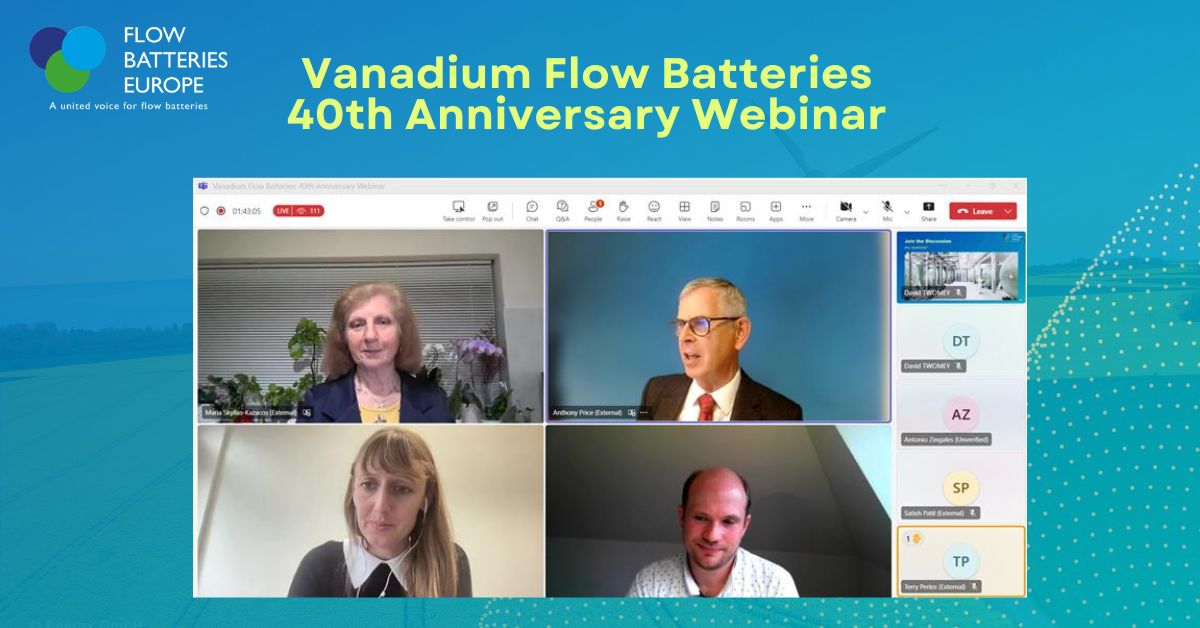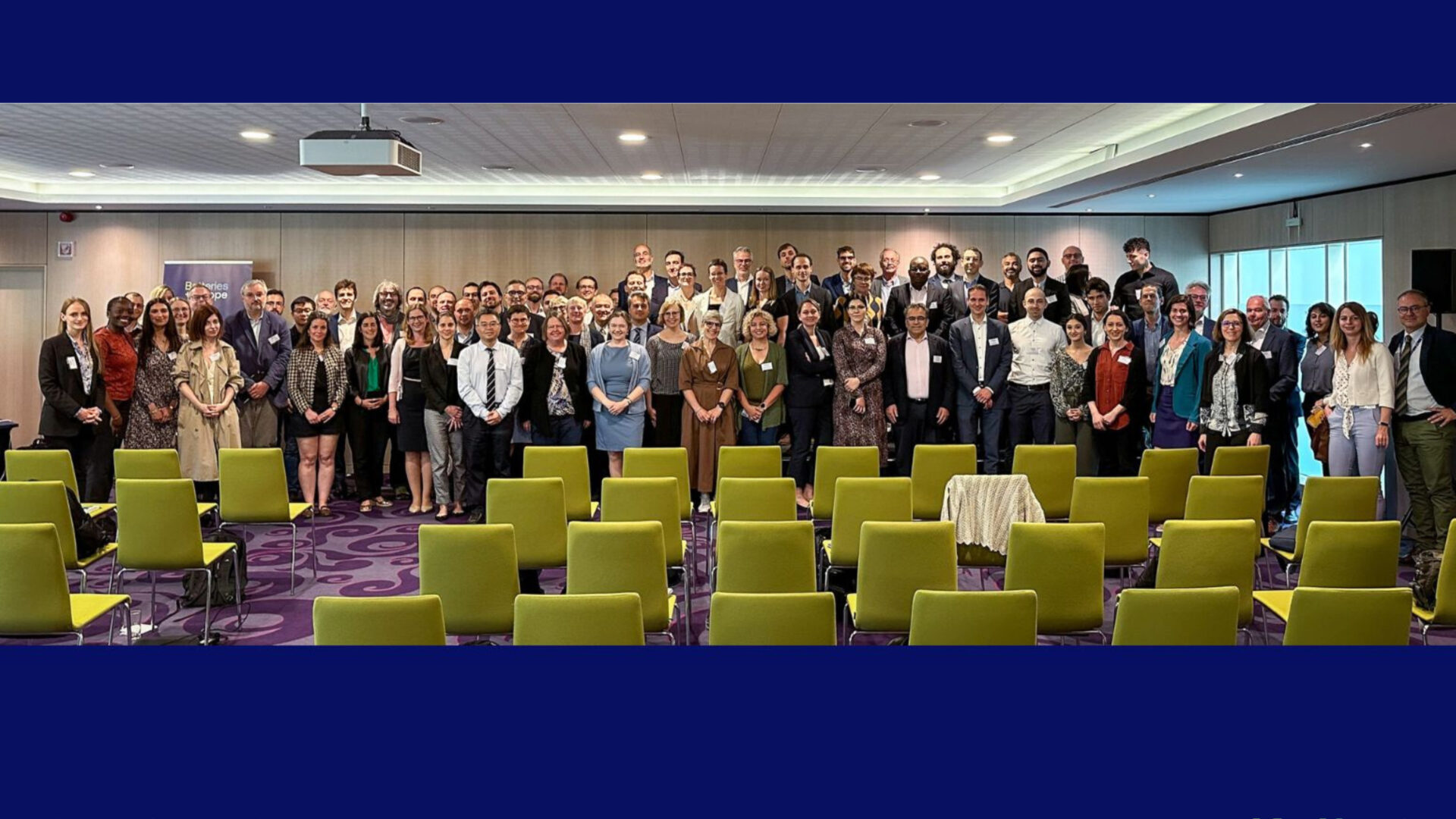31 October 2024:
Over 120 participants attended the Flow Batteries Europe (FBE) webinar on 30 October 2024 celebrating the 40th anniversary of vanadium flow batteries (VFB). The webinar featured an exclusive interview with Emeritus Professor Maria Skyllas-Kazacos AM (University of New South Wales), the initial developer of the first vanadium flow battery.
FBE’s Secretary General, Anthony Price OBE, joined her in a discussion about the historical development and significant advancements of this pivotal technology, tracing its evolution from inception to its current role.
During the discussion, Professor Skyllas-Kazacos explained how the first VFB was developed and highlighted the challenges encountered during the research process, particularly regarding solubility and electrode performance. Additionally, she discussed how she acquired funding, especially through Australian government grants aimed at renewable energy projects for remote areas.
To view the full discussion, click here or see below. You can download the slides here.
Global vanadium supply
Following this, Dr. Jana Plananska (Norge Mining) spoke about the vanadium mining industry in Europe and the growing demand of vanadium worldwide. She pointed out that nearly 80% of global supply of vanadium comes from Russia and China, leaving Europe nearly completely reliant on these imports.
She reiterated the importance of establishing vanadium projects/supply chains in Europe which will come with significant costs and political considerations. Dr. Plananska mentioned ongoing projects in Europe, such as Norge Mining in Norway, which aims to produce magnetite concentrate as a precursor for vanadium oxide by 2029, and emphasised the need for additional funding and support to bring these initiatives to fruition. It was also noted that huge price fluctuations with vanadium is a major challenge for the sector.
Vanadium flow battery projects
Dr. Thomas Lüth (CellCube) spoke about a high-altitude vanadium flow battery project in the Rocky Mountain situated near a military base in Bridgeport, Wyoming. The military base, which currently relies heavily on diesel due to its weak infrastructure and winter conditions, aims to enhance its renewable energy integration, including existing solar installations. There is a growing trend of decarbonisation in various sectors, such as military bases, mining, and remote communities. He mentioned that CellCube’s flow batteries have a sweet spot between 6 – 8 hours of storage duration which have a long operational life exceeding 20 years, with no degradation.
More automation is needed in the manufacturing process
Dr. Lüth also elaborated on how numerous vanadium flow batteries are still made by hand, with significant potential for automation in European manufacturing. Automation can help improve manufacturing efficiencies, scale up production and reduce assembly line costs to cater for the growing demand of long duration energy storage.
Conclusion
The advancement of VFBs over the last 40 years highlights the evolution of the technology, which has progressed from the first 1kW battery built at UNSW to large-scale systems now deployed worldwide. Manufacturing more VFBs with 6-8 hours of storage capacity will be a critical component in order to help achieve our decarbonisation targets. To further advance VFB in Europe, we need to build the security of the supply chain and automate elements of the manufacturing process to reduce the cost and time to deploy VFB.






